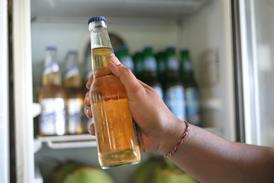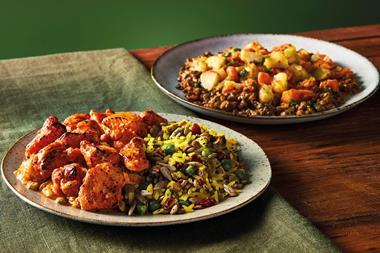With health rarely off the
government's agenda, it is no wonder that demand for better-for-you products is increasing. As an overall grocery category it's a hard market to track because the term 'better for you' is such a catch all, spanning everything from 'free-from' ranges that have been modified for people with food intolerances and allergies, to products that are fortified or enriched with ingredients such as fibre, calcium or vitamins.
But while data is limited, TNS figures for the healthier own label give some idea of how well the overall category is doing. Sales of healthier versions of products across 10 categories were up 1.8% to £1.5bn in the year to 3 December - triple the growth of the previous year.
With consumer demand for such products growing, manufacturers haven't been slow to cash in. But they are keen to stress that better-for-you products are there to help consumers develop more healthy eating habits - not to replace a healthy diet.
"The common misconception is that there are good foods and bad foods," says Richard Tolley, marketing director of Dairy Crest. "In reality this usually translates into good consumer habits and bad consumer habits. Clearly, there are foods that are healthier whether they are natural, nutrient-dense, or low in saturated fats.
"However, the role of better for you is to assist consumers during the transition from bad habits to good habits."
Michael da Costa, managing director of The Food Doctor, says there is a misconception that many better-for-you foods offer a premium 'diet' product for the more educated, discerning consumer.
Consumers need to be made aware of the distinctions between enriched and diet products, he adds. "All too often products do not give consumers the full picture about what they are offering," he says.
Anna Denny, of the British Nutrition Foundation, agrees. "For some groups, such as elderly people with small appetites or children who don't eat enough fruit and vegetables, products that are fortified are a useful method of helping them get enough vitamins and minerals.
"But having a healthy balanced diet is the best option and these products shouldn't replace that."
That said, one product consumers are clearly recognising the health benefits of - both in a supplementary and replacement capacity - is soya, which is not just pulling in meat-replacement consumers but also those looking for an alternative to dairy or those simply wanting to take advantage of the health benefits of soya.
The total dairy-free market is now worth £87m a year, up 13% on 2005, with Alpro holding a 62.5% share, at £52.6m [ACNielsen, year to October 2006].
The growth in the market means brands are no longer just targeting the lactose intolerant, but are building on soya's other health benefits, such as calcium and low levels of trans and saturated-fats.
Daniel Derrick, of soya drinks producer So Good, believes the trend for healthy eating is turning consumers on to the benefits of soya. "The better-for-you category is not only catering for people with intolerances, it's now moving towards targeting healthy eaters too," he says.
"You have things like Jamie Oliver's school dinners campaign encouraging healthy eating, which means the market is changing. You can't put a price on health, and consumers have shown they are willing to pay premium prices for products that are better for them.
"Labelling schemes, such as Guideline Daily Amounts, have helped in building awareness of the need to eat healthily."
While consumers are clearly buying into certain areas of dairy or lactose-free,
products with the nut-free tag are having a harder time .
Although one in every 200 people in the UK is allergic to nuts, according to the British Nutrition Foundation, many retailers are reluctant to place nut-free alongside wheat or gluten-free products because so many gluten-free products contain nuts.
Marketing free-from products poses another dilemma for manufacturers. Should products be promoted as tasting like their mainstream counterparts? This is a particular problem within gluten-free, where many alternatives cannot match the taste profiles of products that contain gluten.
Most producers feel consumers should be encouraged to see them as products in their own right rather than free-from copies of their mainstream counterparts but this doesn't change the fact that consumers can expect a much closer approximation than they actually get - and be turned off if they don't get it.
Yet, despite the challenges in catering for this sector, free-from is a growing category with manufacturers producing more such products to meet demand and retailers responding in kind by allocating more space in store.
Another big growth area is foods that have been fortified with added ingredients, such as wholefoods, according to Kellogg's nutritionist Rimi Obra-Ratwatte.
"People seem to want more whole and super foods," she notes. "We are seeing a greater focus on seeds and berries in terms of added fortification to cereals. Foods like quinoa and pomegranate are growing in popularity and there is a huge growth opportunity for healthy snacks, such as cereal bars."
The Food Doctor's Da Costa believes one area in particular will show strong growth this year. "A particular key growth area in 2007 will be the seeds market," he says. "As consumers become further educated on the benefits of natural ingredients in as natural a state as possible, combined with an increase in regulation on the transparency of product content and claims, these categories will gain appeal."n



















No comments yet